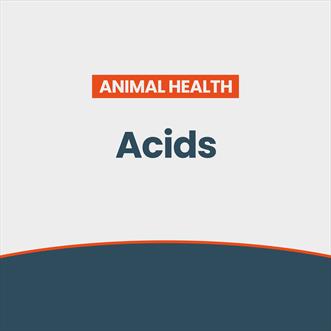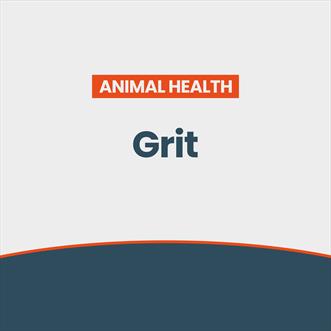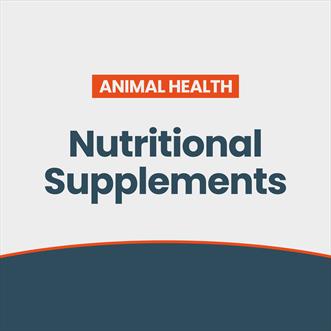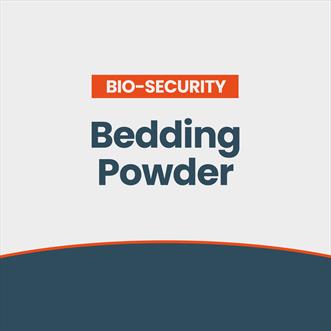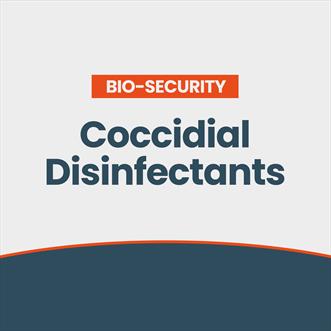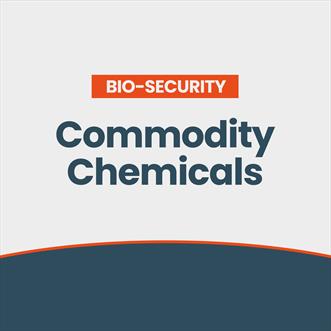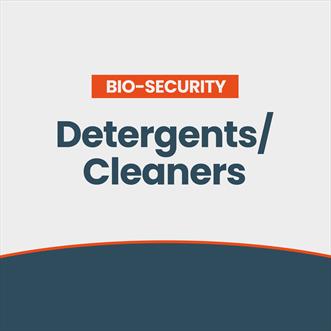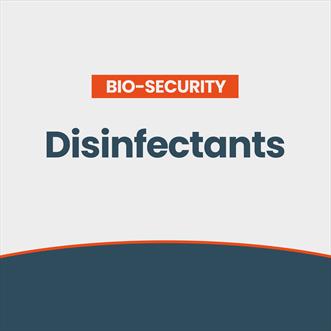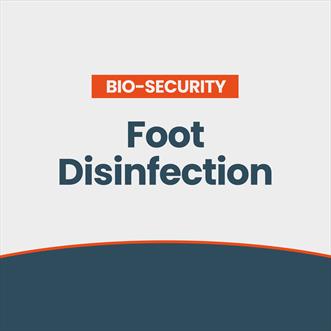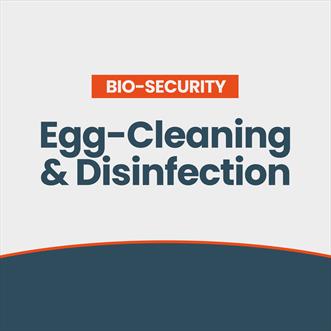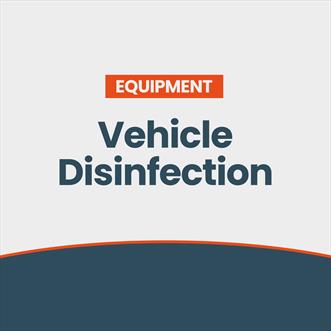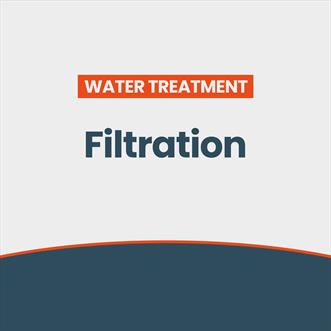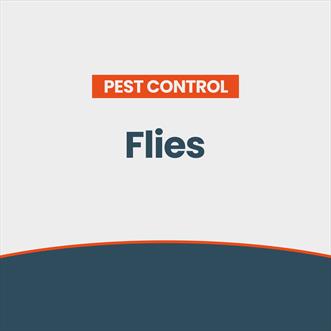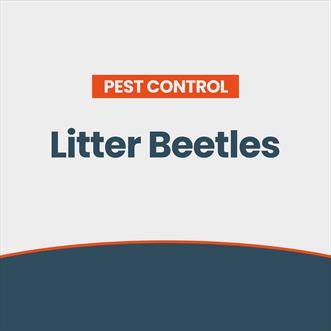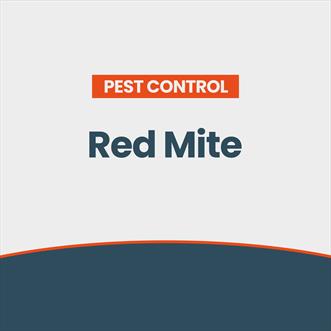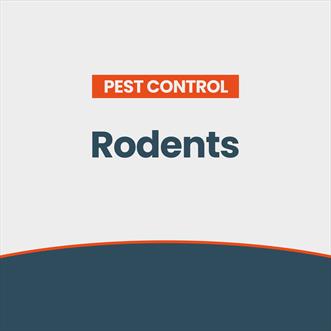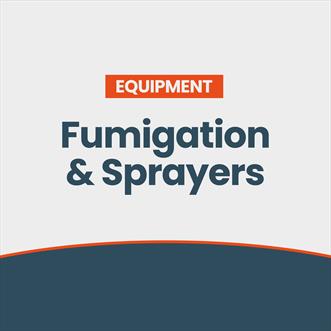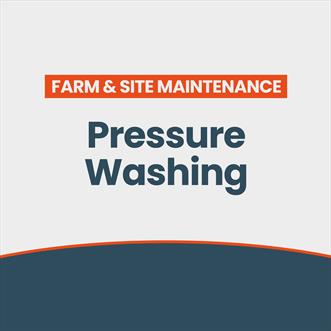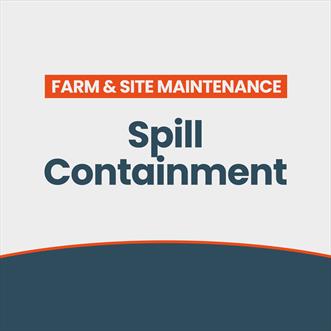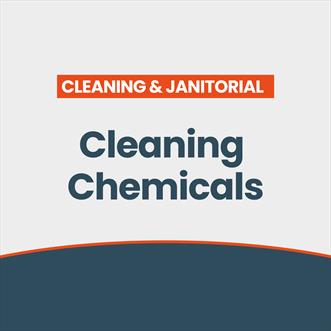The red poultry mite, Dermanyssus gallinae, is a very prolific external parasite, known to every poultry farmer for being very difficult to eradicate with its ability to survive for up to eight months between feeds. Red mites can feed on up to 5% of a birds’ blood over a single night, often causing anaemia and stress, along with stress-related conditions such as feather pecking and cannibalism.
Other effects of red mite are dermatitis and mange, a lowered immunity to disease, and the transmission of diseases, such as Newcastle Disease, fowl typhoid and salmonella. Infested birds also tend to eat more, which impacts on feed-conversion ratios, whilst egg production can be reduced, or eggs can be smaller or downgraded due to spots and smears. Red mite will also bite farm staff when disturbed, which is unpleasant in itself.
Mite populations in poultry housing grow very rapidly during the summer months, but poultry farmers know very well that they never really go away. In fact, in warmer winters they can continue to reproduce, though at a slower rate. Keeping red mite at bay is a relentless battle – annual European industry losses are estimated to be as much as €360 million. Given its impact on bird welfare and operation productivity, control of red mites is critical, and it makes sense to have an informed ongoing programme to tackle red mite rather than simply reacting to outbreak after outbreak.
Signs of an infestation
It’s useful to remember that mites feed on the bird under cover of darkness each night and return to their crevices during the day, so they can often go undetected if birds are examined in daylight. Typically, they can be found hiding under the lip of feed tracks, in nestboxes, particularly under matting and in the lid, and around any slatted areas. Mite traps can be used to do ‘mite counts’ but there are some physical signs of an infestation:
- Pale, ‘jaundiced’ faces and wattles, through anaemia
- Depressed birds, lacking vitality
- Abnormal weight loss or weight gain
- Decreased egg production
- Increase in feed intake
- Dark dots and speckles on normally plain eggs
- In extreme cases, feather loss and signs of dermatitis
- Whitish-grey ‘ash’ (mite faeces) around the edges of crevices and under perches.
- Active red mite on housing which glow in the light of a torch at night
- Hens avoiding using a particular nesting box (due to an infestation)
Severe infestations
A severe mite infestation can cause 10-12% reduced egg production. Dealing with an infestation requires persistence and attention to detail. How an infestation is approached will often depend on how infestations have been previously tackled, together with other factors such as the style of poultry unit and the equipment used. However, there are four prevailing ways of approaching a red mite infestation, which we cover on the following page.
The four principal methods of tackling red mite
Chemical
The chemical approach applies insecticide, usually in an oil or water-based spray, which kills the insects, the larvae and/or eggs by disrupting the nervous system. The advantage of using an insecticide is that it has a residual effect of between 4-12 weeks afterwards, depending on the active ingredient. However, the disadvantages of using insecticides are that they should not be used in the presence of livestock (they are designed to be used at turnaround) and there is a danger that mites can develop a resistance in the event of repeated or insufficient use.
Physical
The physical approach to an infestation involves the use of a product that breaks the red mite down through physical means. For instance, a dessicant attacks the waxy exo-skeleton of the mite, causing it to dehydrate, and a degreaser dissolves the waxy exo-skeleton – both result in death. These substances can be used repeatedly without the risk of development of insecticidal-resistance. In the case of a degreaser, subsequent applications would be recommended after the initial one to target any recently hatched eggs, and crevices or corners that have been missed.
At Interhatch we offer two non-toxic products, Smite Professional, which is a powerful disinfectant and degreaser, and Smite Organic DE Powder, which acts as a desiccant or drying powder.
Oral solution
Mites can be targeted by dosing the water of the birds so that they ingest an active ingredient which attacks or repels the mite without affecting the bird. Some farms use a treatment called Exzolt, which contains an acaricide that attacks the nervous system of mites. Only a vet can prescribe Exzolt, which is administered twice, seven days apart. It is considered quite an expensive product for routine use.
Smite Organic Oblitermite is another oral solution that is used very effectively when added to drinking water, and some farms have managed to keep on top of red mite by using this alone. Its advantage is that it is a completely natural product, a unique combination of hydro alcoholic plant extracts (ginseng, echinacea, rosehip and oregano), which stimulate the bird’s blood into creating its own natural toxins that cause the mite's blood to coagulate, resulting in its death. Because it is natural, it has zero withdrawal time for both eggs and meat and it is also a beneficial tonic for overall immune health.
Biological
A more recent development in combatting both red mites and flies is biological control, using parasitic wasps and predatory mites as non-chemical alternatives to insecticides. In the case of red mites, two species of predatory mites called Androlis and Taurrus are released – they naturally feed on red mites and help keep infestations at bay. When the infestation dies down, so does the predatory mite population as it cannot be sustained. Although new and still undergoing trials, some farms have reported success using this approach.
Good mite housekeeping
Dealing with any infestation is stressful, but good housekeeping can make keeping on top of it much easier. This starts with making the environment as inhospitable as possible for mites by sealing up or removing hiding places. This also makes these areas much easier to deep clean when the time comes.
Knowing what to look for and making regular checks for signs of red mite can stop a severe infestation taking hold, thereby limiting commercial losses.
It goes without saying that proper care and attention should be given to operator hygiene and suitable protective clothing to prevent the spread of mites between sites, as well as the efficient disposal of mite-infested litter and debris, to prevent re-infestation.
Vigilance, prompt treatment, persistence, and attention to detail will generally beat a mite infestation. Sometimes, though, mites can be difficult to beat. A structured proactive approach is always better and this will often depend on individual circumstances and the length of time that a particular treatment has been used. Sometimes combining treatments can crack a particularly stubborn infestation.
Speak to our Interhatch experts who will listen to the specifics of your challenges, and then advise on a regular treatment plan to keep red mite at bay. They will ensure structured rotation of treatments to avoid the red mites developing resistance.

